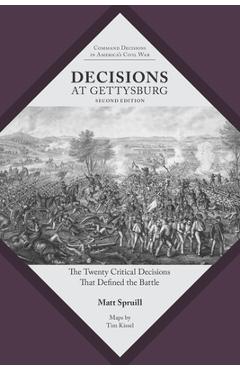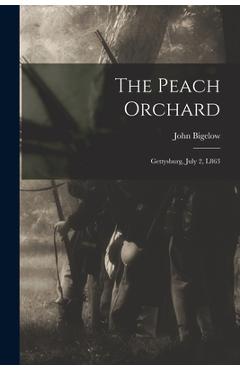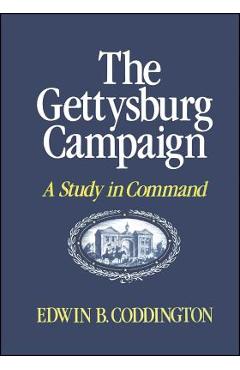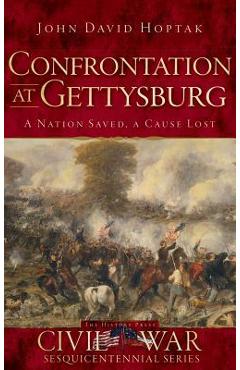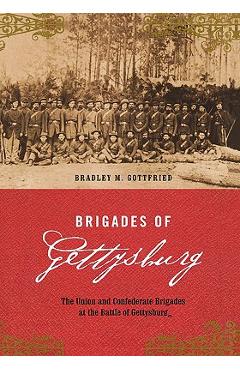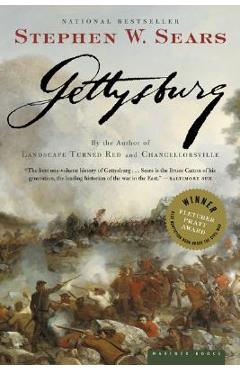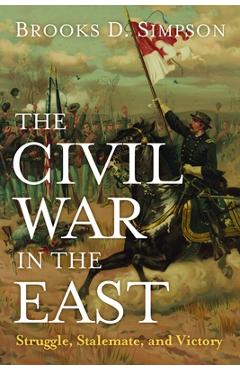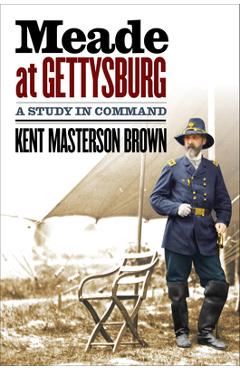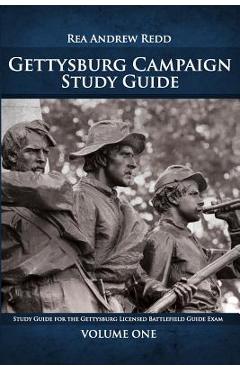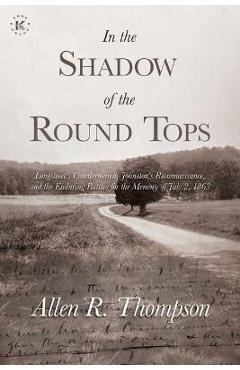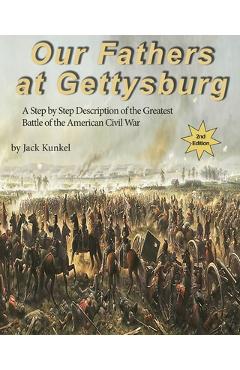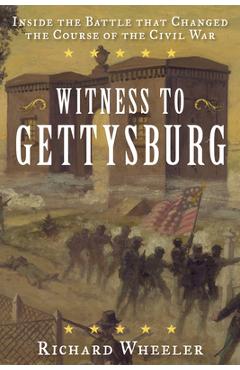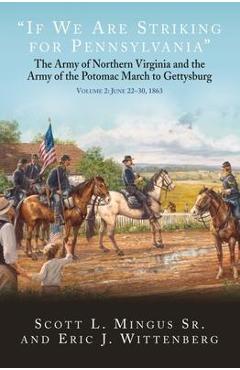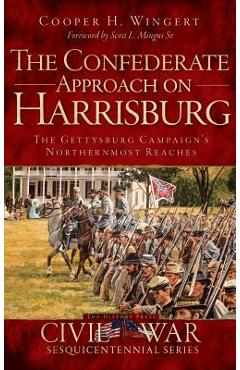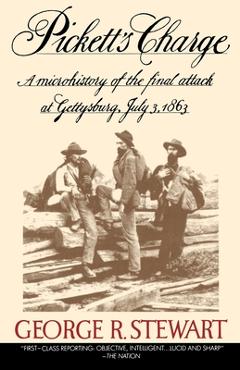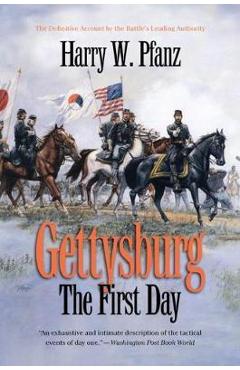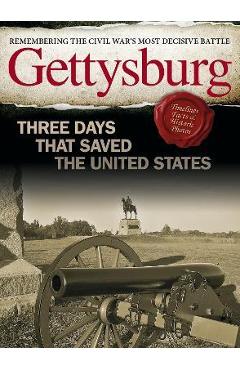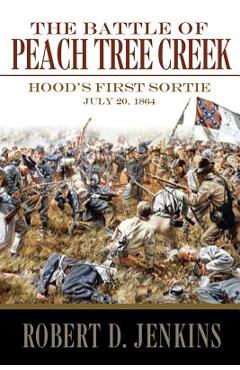Gettysburg's Peach Orchard: Longstreet, Sickles, and the Bloody Fight for the "Commanding Ground" Along the Emmitsburg Road

Gettysburg's Peach Orchard: Longstreet, Sickles, and the Bloody Fight for the "Commanding Ground" Along the Emmitsburg Road
Winner, 2019, The Bachelder-Coddington Literary Award, Given by the Robert E. Lee Civil War Round Table of Central New Jersey
More books have been written about the battle of Gettysburg than any other engagement of the Civil War. The historiography of the battle's second day is usually dominated by the Union's successful defense of Little Round Top, but the day's most influential action occurred nearly one mile west along the Emmitsburg Road in and around farmer Joseph Sherfy's peach orchard. Despite its overriding importance, no full-length study of this pivotal action has been written until now with James Hessler's and Britt Isenberg's Gettysburg's Peach Orchard: Longstreet, Sickles, and the Bloody Fight for the "Commanding Ground" Along the Emmitsburg Road.
On July 2, 1863, Confederate Gen. Robert E. Lee ordered a skeptical Lt. Gen. James Longstreet to assault the Union left flank. The offensive was intended to seize the Peach Orchard and surrounding ground along the Emmitsburg Road for use as an artillery position to support the ongoing attack. However, Union general and former congressman Daniel Sickles, commander of the Union III Corps, misinterpreted his orders and occupied the orchard first.
What followed was some of Gettysburg's bloodiest and most controversial fighting. General Sickles's questionable advance forced Longstreet's artillery and infantry to fight for every inch of ground on the way to Cemetery Ridge. The Confederate attack crushed the Peach Orchard salient and other parts of the Union line and threatened the left flank of Maj. Gen. George Meade's Army of the Potomac. The command decisions made on and around the Sherfy property influenced actions on every part of the battlefield. The occupation of the high ground at the Peach Orchard helped General Lee rationalize ordering the tragic July 3 assault known as "Pickett's Charge."
This richly detailed study is based upon scores of primary accounts and a deep understanding of the complex terrain. Hessler and Isenberg, both Gettysburg Licensed Battlefield Guides, combine the military aspects of the fighting with human interest stories in a balanced treatment of the bloody attack and defense of Gettysburg's Peach Orchard. It is the study Gettysburg students have been waiting to read.
PRP: 154.69 Lei
Acesta este Pretul Recomandat de Producator. Pretul de vanzare al produsului este afisat mai jos.
139.22Lei
139.22Lei
154.69 LeiLivrare in 2-4 saptamani
Descrierea produsului
Winner, 2019, The Bachelder-Coddington Literary Award, Given by the Robert E. Lee Civil War Round Table of Central New Jersey
More books have been written about the battle of Gettysburg than any other engagement of the Civil War. The historiography of the battle's second day is usually dominated by the Union's successful defense of Little Round Top, but the day's most influential action occurred nearly one mile west along the Emmitsburg Road in and around farmer Joseph Sherfy's peach orchard. Despite its overriding importance, no full-length study of this pivotal action has been written until now with James Hessler's and Britt Isenberg's Gettysburg's Peach Orchard: Longstreet, Sickles, and the Bloody Fight for the "Commanding Ground" Along the Emmitsburg Road.
On July 2, 1863, Confederate Gen. Robert E. Lee ordered a skeptical Lt. Gen. James Longstreet to assault the Union left flank. The offensive was intended to seize the Peach Orchard and surrounding ground along the Emmitsburg Road for use as an artillery position to support the ongoing attack. However, Union general and former congressman Daniel Sickles, commander of the Union III Corps, misinterpreted his orders and occupied the orchard first.
What followed was some of Gettysburg's bloodiest and most controversial fighting. General Sickles's questionable advance forced Longstreet's artillery and infantry to fight for every inch of ground on the way to Cemetery Ridge. The Confederate attack crushed the Peach Orchard salient and other parts of the Union line and threatened the left flank of Maj. Gen. George Meade's Army of the Potomac. The command decisions made on and around the Sherfy property influenced actions on every part of the battlefield. The occupation of the high ground at the Peach Orchard helped General Lee rationalize ordering the tragic July 3 assault known as "Pickett's Charge."
This richly detailed study is based upon scores of primary accounts and a deep understanding of the complex terrain. Hessler and Isenberg, both Gettysburg Licensed Battlefield Guides, combine the military aspects of the fighting with human interest stories in a balanced treatment of the bloody attack and defense of Gettysburg's Peach Orchard. It is the study Gettysburg students have been waiting to read.
Detaliile produsului









